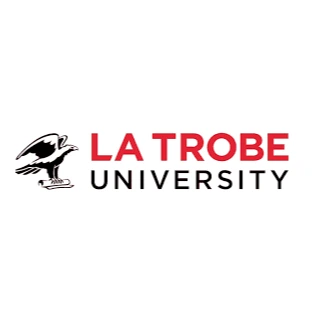• IELTS
Use of Metaphors and Similes for IELTS Exam Excellence
3325 Reads
3 min Read
Similes and metaphors refer to direct comparisons and indirect comparisons respectively that can help candidates to express themselves creatively and effectively in the IELTS exam. They can be used to create vivid imagery, add depth and complexity to writing, and make points in a memorable way. Read to understand the use and importance of similes and metaphors in the IELTS test.
Similes and metaphors add depth and creativity to a candidate’s communication in IELTS exam. They are often used in similar ways; therefore, it’s important for writers to have a solid base of the difference and when to use each. The use of metaphors and similes for IELTS exams can help student’s convey abstract concepts or to make writing and speech more engaging. Test-takers can utilize these in various forms. Grammar plays an important part in IELTS and thus, the use of metaphors and similes can help students get high band scores.
Metaphors for IELTS Exam
Similes for IELTS Exam
Difference between Metaphors and Similes
Importance of Using Similes and Metaphors in IELTS
Conclusion
Also read: IELTS Academic vs IELTS General
FAQ
Get great articles direct to your inbox
The latest news, articles, and resources, sent straight to your inbox every month.
Popular Universities to Study Abroad
World class education waiting for you.

College of The Rockies - Cranbrook Campus
British Columbia, Canada • 26 Programmes
Tuition Fee : CAD 8500-19000 / year

Kaplan Business School - Brisbane Campus
Queensland, Australia • 31 Programmes
Tuition Fee : AUD 22000-24000 / year

State University of New York - Buffalo State University
New York, USA • 119 Programmes
Tuition Fee : USD 19000-19700 / year
.webp)
Alexander College - Burnaby Campus
British Columbia, Canada • 11 Programmes
Tuition Fee : CAD 18000-18500 / year
.png)
Shorelight Group - University of Wisconsin-Superior
Wisconsin, USA • 42 Programmes
Tuition Fee : USD 16500-17000 / year

Navitas Group - The University of Waikato College
Hamilton, New Zealand • 25 Programmes
Tuition Fee : NZD 0-0 / year

Global University Systems (GUS) - University of Niagara Falls Canada
Ontario, Canada • 7 Programmes
Tuition Fee : CAD 20000-29000 / year

La Trobe University - Bendigo Campus
Victoria, Australia • 49 Programmes
Tuition Fee : AUD 33000-76000 / year
Popular English Language Proficiency Exams
IELTS Online
- Live Classes
Blogs and Articles
Curated content to keep you updated on the latest education trends, news and more.
Updated on • Jul 17,2025 05:33 PM IST • USA
PTE Accepted Universities in Australia
Updated on • Jul 17,2025 05:09 PM IST • PTE
Part-Time Jobs for International Students in Australia
Updated on • Jul 17,2025 03:44 PM IST • Australia
Updated on • Jul 12,2025 04:02 PM IST • USA
Updated on • Jul 11,2025 11:32 AM IST • Education
CPT vs OPT: Meaning, Difference, and How to Apply
Updated on • Jul 11,2025 10:40 AM IST • USA
Masters in Computer Science in UK: Top Colleges, Eligibility, Scholarships
Updated on • Jul 10,2025 11:29 AM IST • study in the UK
Highest Paying Jobs in the World
Updated on • Jul 08,2025 01:40 PM IST • Study Abroad
MBA in Australia for Indian Students: Best Universities, Requirements, Scholarship, Courses, Jobs
Updated on • Jul 08,2025 01:35 PM IST • Australia
Canada vs Australia: Which Country is Better for Indian Students in 2025?
Updated on • Jul 07,2025 12:46 PM IST • Education
France vs Germany: Which Is Better for International Students?
Updated on • Jun 30,2025 05:15 PM IST • Education
Top 10 Agricultural Universities in USA
Updated on • Jun 27,2025 05:25 PM IST • USA
Most In-Demand Future Careers in 2025
Updated on • Jun 26,2025 04:41 PM IST • Education
How Much Do Nurses Make in the U.S.?
Updated on • Jun 23,2025 03:59 PM IST • USA
Updated on • Jun 21,2025 02:00 PM IST • USA
MBA in UK: Universities, Eligibility, Types, and Career Opportunities
Updated on • Jun 19,2025 04:09 PM IST • UK • study in the UK
Scholarships in France for Indian Students
Updated on • May 29,2025 05:22 PM IST • France
Intakes in Dubai for Indian Students
Updated on • May 27,2025 03:34 PM IST • Study in Dubai
France Student Visa 2025 – Requirements, Fees, Checklist & Application Process
Updated on • May 23,2025 03:36 PM IST • France
MBA in France for Indian Students in 2025
Updated on • May 22,2025 05:35 PM IST • France
Related Blogs and Articles
A little effort to provide an authentic and reliable content for keen readers!!
Updated on • 11-04-2025 • IELTS
Describe Your Hometown IELTS Speaking Part 1 Topic
Updated on • 07-04-2025 • IELTS
PTE vs IELTS : Know the Difference and Which is Easier?
Updated on • 21-03-2025 • IELTS
IELTS Exam Dates 2025 in India
Updated on • 18-01-2025 • IELTS
IELTS Reading Practice Tests 2025: Reading Passage and Sample Questions
Updated on • 15-01-2025 • IELTS
IELTS Letter Writing Topics 2025
Updated on • 15-01-2025 • IELTS
Canada IELTS band requirements 2025
Updated on • 10-01-2025 • IELTS
Updated on • 25-11-2024 • IELTS
Updated on • 21-11-2024 • IELTS
Updated on • 02-11-2024 • IELTS
Linking Words for IELTS Speaking - Word List & Tips
Updated on • 25-10-2024 • IELTS
IELTS Writing Task 2 - Academic and General Topics with Sample Answer
Updated on • 25-10-2024 • IELTS
IELTS Writing Task 2: Tips, Lessons & Models
Updated on • 25-10-2024 • IELTS
IELTS Test Report Form (TRF): Number, Tracking, Validity and Sample
Updated on • 25-10-2024 • IELTS
IELTS Speaking Samples and Answers
Updated on • 25-10-2024 • IELTS
Updated on • 25-10-2024 • IELTS
Updated on • 25-10-2024 • IELTS
IELTS Sample Charts for Writing Task 1 Practice
Updated on • 25-10-2024 • IELTS
IELTS GT Writing Task 1/ IELTS Letter Writing
Updated on • 25-10-2024 • IELTS
Updated on • 25-10-2024 • IELTS















